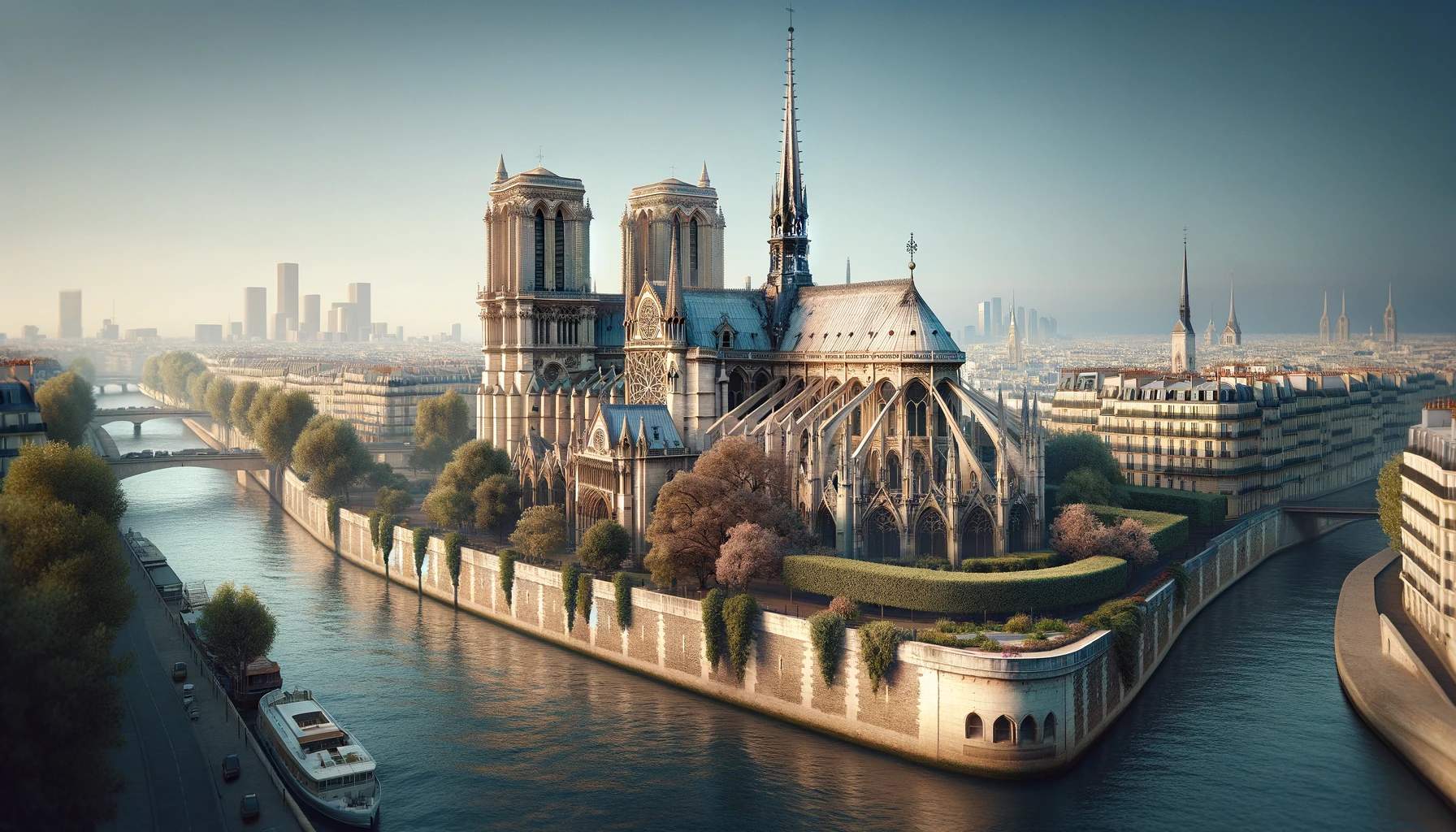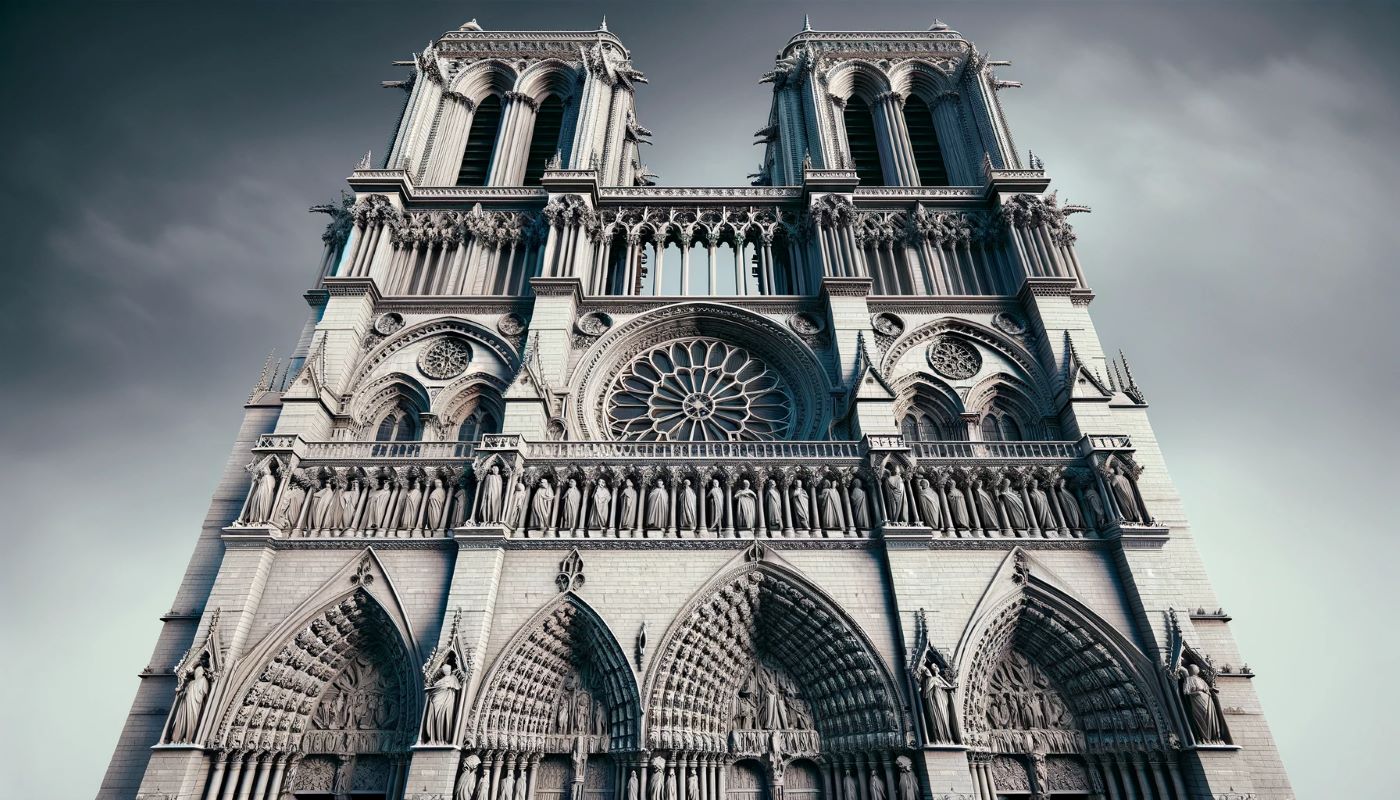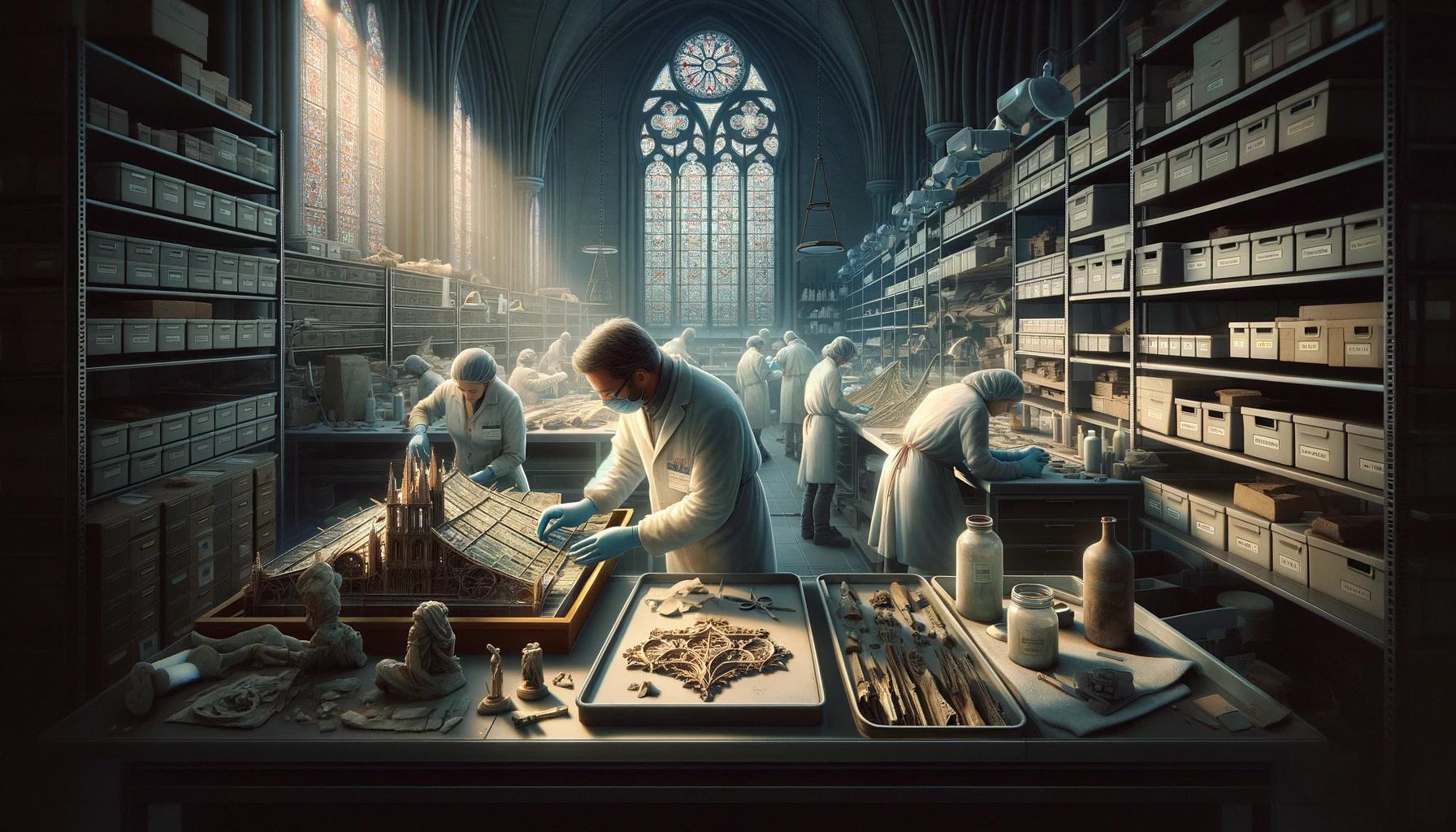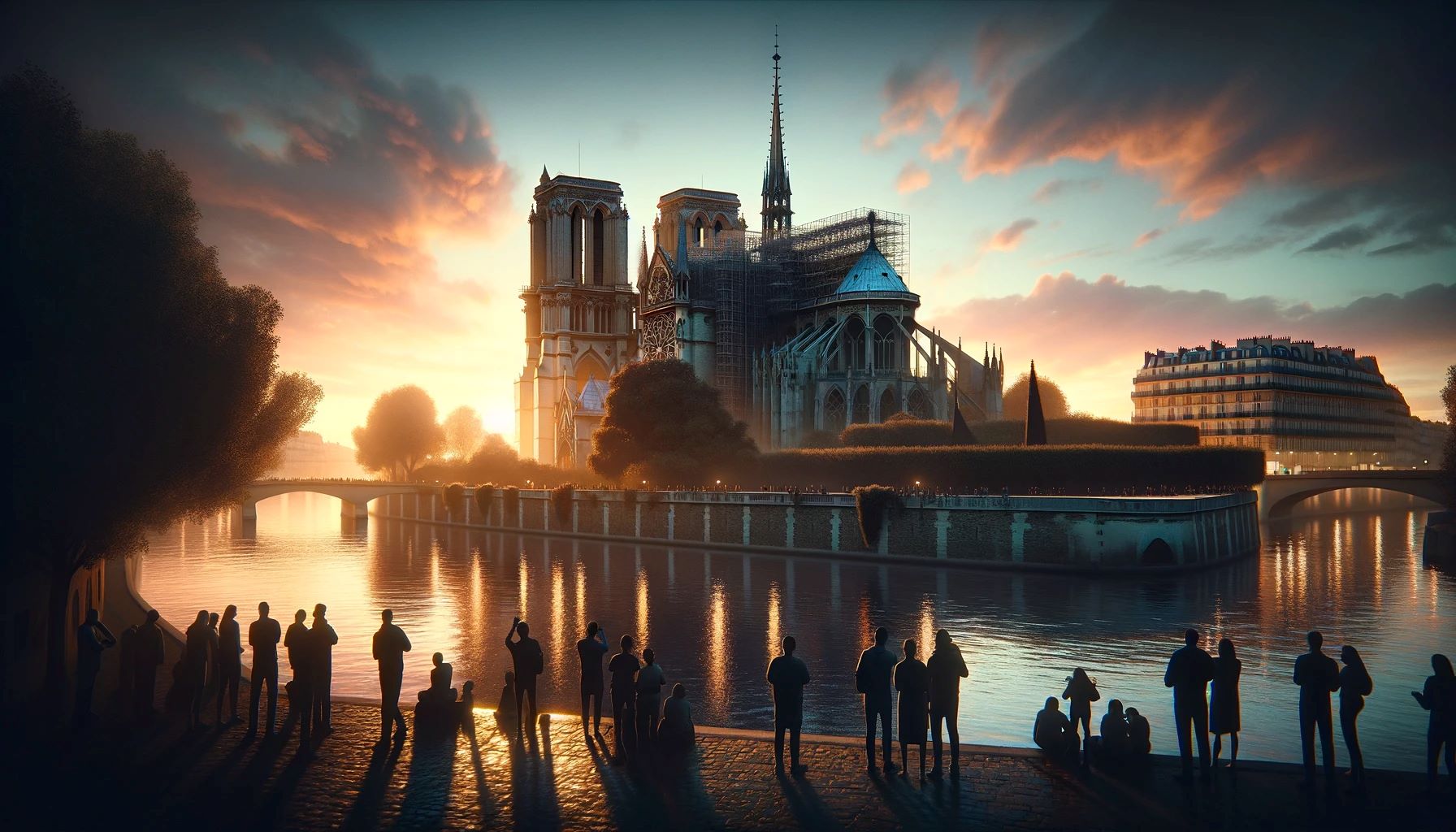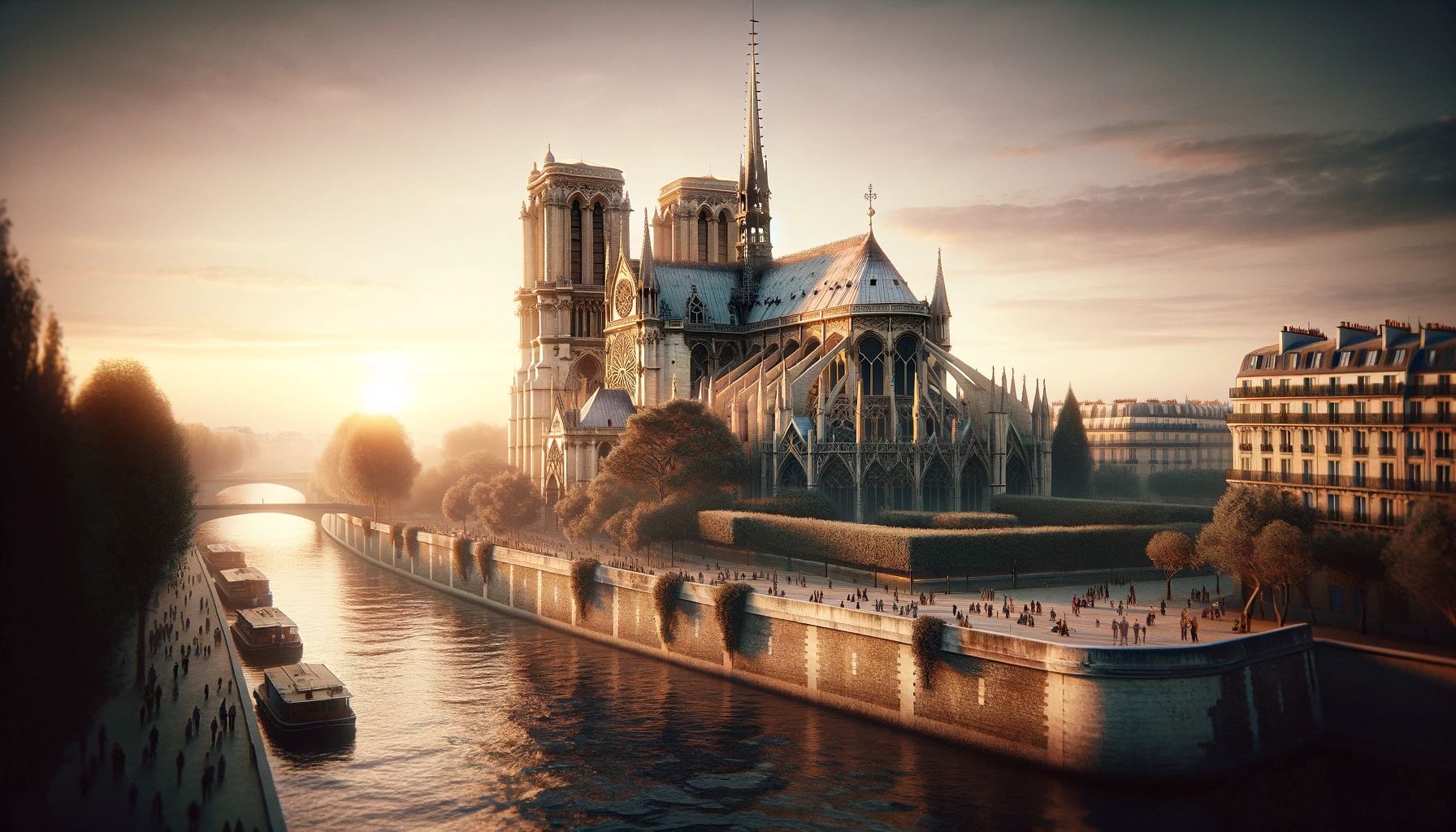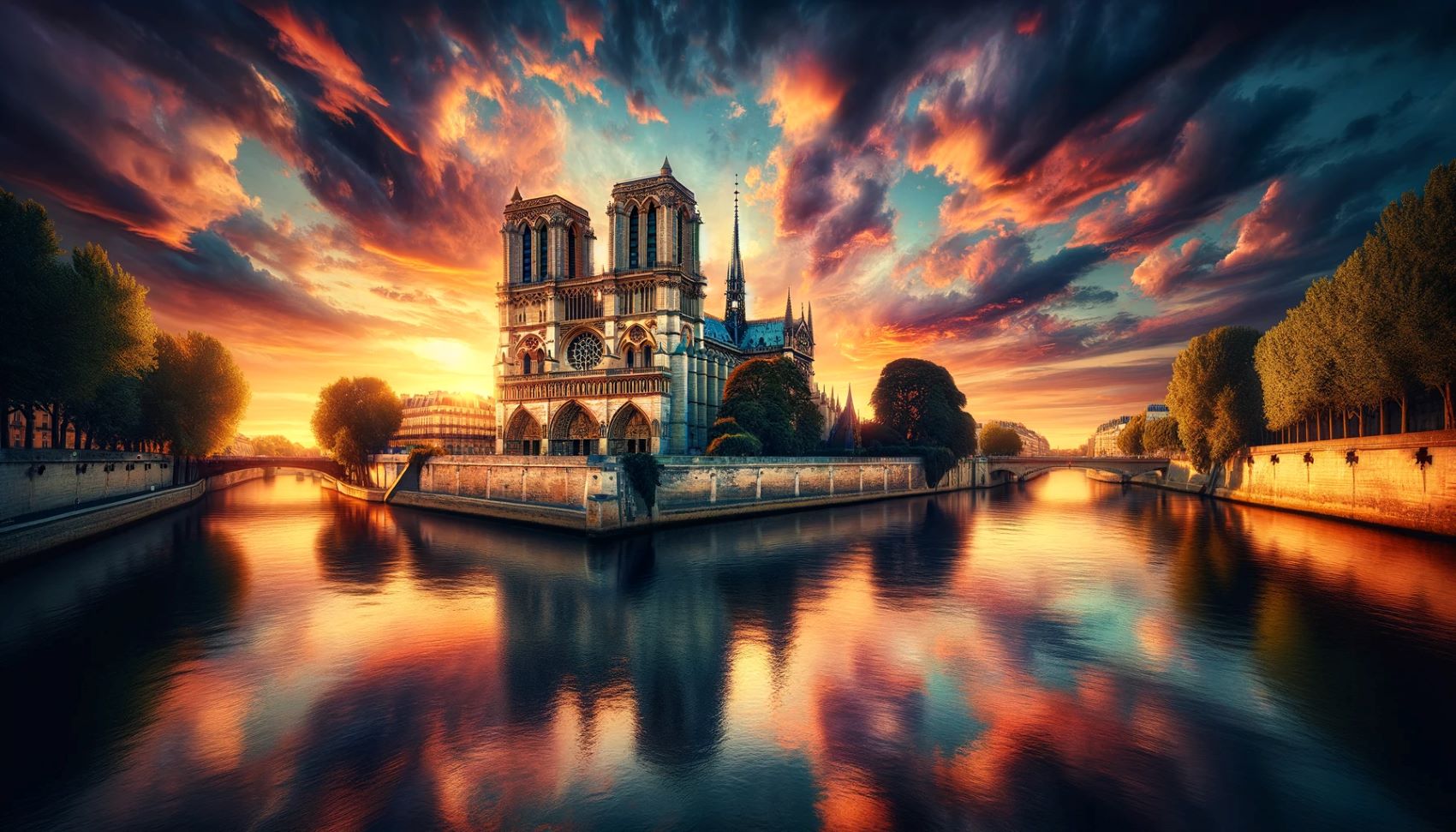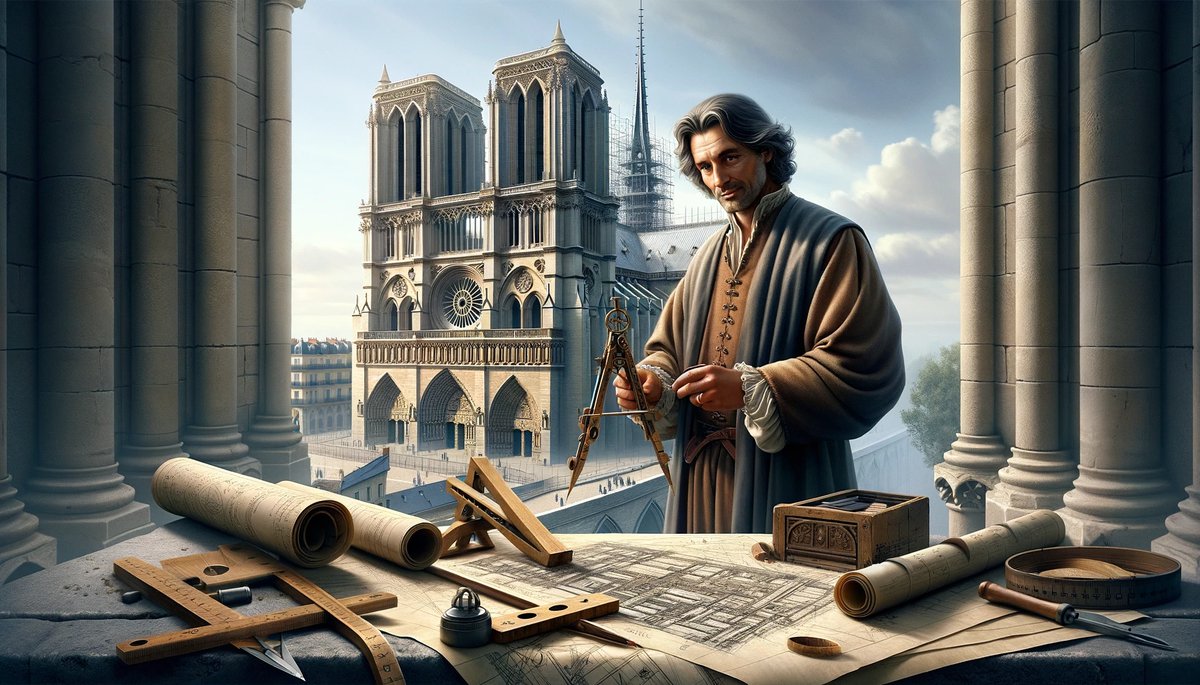Home>Arts and Culture>What Is The Purpose Of Notre Dame Cathedral


Arts and Culture
What Is The Purpose Of Notre Dame Cathedral
Published: February 16, 2024
Peter Smith, Editorial Director at Christian.net, combines deep insights into faith, politics, and culture to lead content creation that resonates widely. Awarded for his contributions to religious discourse, he previously headed a major organization for religious communicators, enhancing dialogue on faith's societal impacts.
Discover the rich history and cultural significance of Notre Dame Cathedral. Explore its role in arts and culture, and its enduring impact on the world. Unlock the purpose of this iconic architectural masterpiece.
(Many of the links in this article redirect to a specific reviewed product. Your purchase of these products through affiliate links helps to generate commission for Christian.net, at no extra cost. Learn more)
Table of Contents
Introduction
Notre Dame Cathedral, a timeless symbol of Paris, stands as a testament to human ingenuity, faith, and artistic expression. This architectural marvel has captivated the hearts and minds of people around the world for centuries. Its grandeur and historical significance make it a beacon of culture, spirituality, and artistry.
The purpose of Notre Dame Cathedral extends far beyond its physical presence. It serves as a living chronicle of human history, reflecting the evolution of architectural styles, religious devotion, and cultural identity. From its intricate façade to its towering spires, every element of Notre Dame Cathedral tells a story of craftsmanship, devotion, and resilience.
As we delve into the multifaceted purpose of Notre Dame Cathedral, we will uncover the layers of its historical, architectural, religious, and cultural significance. This exploration will shed light on the enduring legacy of this iconic structure and the profound impact it has had on the world stage. Join us on a journey through time and meaning as we unravel the mysteries and marvels of Notre Dame Cathedral.
Read more: What Religion Is Notre Dame Cathedral?
Historical Background of Notre Dame Cathedral
The history of Notre Dame Cathedral is a tapestry woven with threads of triumph, tragedy, and timeless resilience. Its origins can be traced back to the 12th century when Bishop Maurice de Sully envisioned a grand cathedral that would stand as a testament to the glory of Paris and the Catholic faith. Construction commenced in 1163 under the auspices of Bishop de Sully, marking the beginning of a monumental undertaking that would span centuries.
The cathedral's construction was a feat of medieval engineering and craftsmanship, with master builders and artisans dedicating their lives to its creation. The intricate Gothic architecture of Notre Dame Cathedral reflected the burgeoning artistic and architectural advancements of the era, setting new standards for cathedral design.
Over the centuries, Notre Dame Cathedral bore witness to pivotal moments in history, from the coronation of Napoleon Bonaparte to the tumultuous events of the French Revolution. Its enduring presence weathered the tides of change, standing as a silent sentinel amid the ebb and flow of time.
Tragically, Notre Dame Cathedral suffered extensive damage during the devastating fire of April 15, 2019, which sent shockwaves across the globe. The blaze ravaged the iconic spire and roof, leaving the world in mourning for this beloved symbol of human achievement.
In the aftermath of the fire, an outpouring of support and solidarity emerged from every corner of the world, igniting a collective determination to restore Notre Dame Cathedral to its former glory. The painstaking restoration efforts have become a testament to the unwavering spirit of resilience and reverence for history.
Today, Notre Dame Cathedral stands as a living testament to the indomitable human spirit, transcending time and adversity. Its historical significance serves as a bridge between the past and the present, inviting visitors to immerse themselves in the rich tapestry of its legacy.
As we gaze upon the majestic façade and soaring spires of Notre Dame Cathedral, we are reminded of the enduring power of human endeavor and the timeless allure of history etched in stone.
Architectural Significance of Notre Dame Cathedral
The architectural significance of Notre Dame Cathedral transcends mere construction; it embodies a profound testament to human creativity, innovation, and spiritual aspiration. As one of the finest examples of French Gothic architecture, Notre Dame Cathedral stands as a masterpiece of ingenuity and artistic expression.
The cathedral's architectural design showcases the height of medieval craftsmanship, with its soaring spires, intricate rose windows, and majestic flying buttresses. The innovative use of rib vaults and pointed arches allowed for the creation of lofty, light-filled interiors, defying the limitations of traditional building techniques. The harmonious blend of form and function is evident in every aspect of Notre Dame Cathedral, from its awe-inspiring nave to its meticulously carved stone facades.
The iconic rose windows, renowned for their kaleidoscopic beauty and intricate tracery, serve as a testament to the skill and artistry of the cathedral's craftsmen. These radiant masterpieces of stained glass infuse the interior spaces with a celestial glow, captivating visitors with their ethereal beauty and spiritual symbolism.
Notre Dame Cathedral's flying buttresses, a marvel of architectural engineering, exemplify the innovative solutions devised by medieval builders to support the structure's immense weight and height. These graceful stone arches, extending outward from the exterior walls, not only provide structural stability but also contribute to the cathedral's iconic silhouette, evoking a sense of ethereal grace and grandeur.
The cathedral's spire, though tragically lost in the 2019 fire, was a defining feature of its architectural composition. Rising majestically towards the heavens, the spire symbolized a spiritual beacon, drawing the gaze skyward and inspiring awe in all who beheld it. Its reconstruction stands as a testament to the enduring legacy of Notre Dame Cathedral and the unwavering commitment to preserving its architectural splendor.
Notre Dame Cathedral's architectural significance extends beyond its physical form; it embodies the collective aspirations, beliefs, and artistic achievements of generations past. Its enduring presence continues to inspire awe and reverence, inviting visitors to marvel at the timeless fusion of art, faith, and human ingenuity.
As we stand in the shadow of Notre Dame Cathedral, we are reminded of the transcendent power of architectural innovation and the enduring legacy of a structure that has stood the test of time.
Religious Significance of Notre Dame Cathedral
The religious significance of Notre Dame Cathedral transcends its role as a mere architectural marvel; it embodies a profound testament to faith, devotion, and spiritual transcendence. From its inception, Notre Dame Cathedral has served as a sacred sanctuary, a hallowed space where the divine and the earthly converge in harmonious splendor.
At the heart of Notre Dame Cathedral lies a rich tapestry of religious symbolism, each element meticulously crafted to inspire awe and reverence. The cathedral's soaring spires, reaching towards the heavens, symbolize the eternal aspiration of the human spirit to transcend earthly bounds and seek communion with the divine. The celestial beauty of the rose windows, aglow with the vibrant hues of stained glass, serves as a visual hymn to the divine light that illuminates the soul.
The interior spaces of Notre Dame Cathedral, with their lofty vaults and ethereal ambience, evoke a sense of transcendence and spiritual contemplation. The nave, with its grandeur and solemnity, invites worshippers to immerse themselves in prayer and reflection, fostering a profound connection to the sacred mysteries enshrined within its walls.
The cathedral's rich sculptural adornments, depicting biblical narratives and saints, serve as a visual testament to the enduring power of faith and the sanctity of divine grace. Every arch, column, and carving bears witness to the unwavering devotion of the artisans who dedicated their talents to glorifying the divine within the earthly realm.
Notre Dame Cathedral has been a witness to countless moments of religious significance, from solemn ceremonies to jubilant celebrations. Its sacred spaces have echoed with the prayers and hymns of generations, carrying the hopes and aspirations of the faithful skyward.
The devastating fire of 2019, which ravaged Notre Dame Cathedral, sparked a global outpouring of solidarity and support, underscoring the cathedral's profound impact on the religious consciousness of humanity. The subsequent restoration efforts stand as a testament to the unwavering commitment to preserving this sacred edifice for future generations.
As we stand in the presence of Notre Dame Cathedral, we are reminded of the enduring power of faith, the timeless allure of sacred art, and the transcendent beauty of a structure that has borne witness to the prayers and praises of centuries.
Cultural and Symbolic Importance of Notre Dame Cathedral
Notre Dame Cathedral transcends its role as a mere architectural wonder; it embodies a profound cultural and symbolic significance that resonates with people across the globe. As an enduring symbol of Paris and a testament to human creativity, Notre Dame Cathedral holds a revered place in the cultural tapestry of the world.
The cathedral's cultural importance lies in its status as a living repository of history, art, and collective memory. For centuries, it has stood as a silent witness to pivotal moments in French history, from royal coronations to revolutionary upheavals. Its iconic silhouette has become synonymous with the Parisian skyline, evoking a sense of timelessness and grandeur that captivates the imagination of visitors and locals alike.
Notre Dame Cathedral's symbolic significance extends beyond its physical presence; it embodies the spirit of resilience, unity, and cultural identity. The cathedral's majestic spires, intricate sculptures, and celestial rose windows serve as visual emblems of human aspiration and artistic achievement. Each element of its design reflects a profound reverence for beauty, faith, and the enduring power of the human spirit.
The cathedral's cultural and symbolic resonance extends far beyond the borders of France, permeating the global consciousness as a beacon of artistry, history, and spiritual devotion. Its portrayal in literature, art, and popular culture has further solidified its status as an enduring symbol of human achievement and cultural heritage.
The devastating fire of 2019, which engulfed Notre Dame Cathedral, sparked an outpouring of grief and solidarity from people of diverse cultural backgrounds, underscoring its universal significance. The subsequent efforts to restore and preserve this architectural masterpiece have become a testament to the collective commitment to safeguarding our shared cultural heritage for future generations.
As we gaze upon the resplendent façade and timeless beauty of Notre Dame Cathedral, we are reminded of the enduring impact of cultural icons that transcend time and space, uniting humanity in a shared appreciation for the wonders of human creativity and cultural legacy.
Restoration and Preservation Efforts for Notre Dame Cathedral
Following the devastating fire that engulfed Notre Dame Cathedral on April 15, 2019, a global outpouring of solidarity and support emerged, igniting a collective determination to restore this iconic symbol of human achievement and cultural heritage. The preservation efforts for Notre Dame Cathedral have become a testament to the unwavering commitment to safeguarding our shared cultural legacy for future generations.
In the immediate aftermath of the fire, a sense of urgency and resolve permeated the international community, as pledges of support and expertise poured in from around the world. The French government, in collaboration with preservation experts, architects, and artisans, embarked on a monumental restoration project aimed at meticulously reconstructing and preserving the cathedral's architectural splendor.
The painstaking process of restoration began with the meticulous assessment of the structural integrity of Notre Dame Cathedral. Preservation specialists and architectural experts meticulously documented and cataloged the surviving elements of the cathedral, salvaging precious artifacts and fragments that had withstood the ravages of the fire.
The restoration efforts also encompassed the delicate task of stabilizing the cathedral's structure, ensuring that it remained resilient against the passage of time and the elements. Advanced techniques and innovative methodologies were employed to reinforce the cathedral's stonework, buttresses, and iconic rose windows, safeguarding them for future generations to behold.
Central to the restoration project is the reconstruction of Notre Dame Cathedral's iconic spire, which was tragically lost in the fire. A global call for architectural proposals and designs elicited a diverse array of visionary concepts, each seeking to capture the spirit and grandeur of the cathedral's original spire while infusing it with contemporary ingenuity.
The restoration and preservation efforts for Notre Dame Cathedral have transcended mere reconstruction; they have become a testament to the enduring spirit of human resilience and reverence for history. The global community's unwavering commitment to preserving this architectural masterpiece stands as a testament to the collective dedication to safeguarding our shared cultural heritage for generations to come.
As the restoration of Notre Dame Cathedral continues to unfold, it serves as a poignant reminder of the timeless allure of cultural icons and the indomitable human spirit that seeks to preserve the wonders of our shared heritage.
Conclusion
In conclusion, Notre Dame Cathedral stands as a timeless testament to the enduring legacy of human creativity, faith, and cultural significance. From its humble origins in the 12th century to its enduring presence as a global icon, Notre Dame Cathedral has woven a rich tapestry of history, artistry, and spiritual devotion. Its purpose transcends mere architectural grandeur; it embodies the collective aspirations, beliefs, and artistic achievements of generations past.
The cathedral's historical significance serves as a bridge between the past and the present, inviting visitors to immerse themselves in the rich tapestry of its legacy. As a pinnacle of French Gothic architecture, Notre Dame Cathedral stands as a masterpiece of ingenuity and artistic expression, showcasing the height of medieval craftsmanship and architectural innovation. Its soaring spires, celestial rose windows, and graceful flying buttresses bear witness to the enduring power of human endeavor and the timeless allure of history etched in stone.
Notre Dame Cathedral's religious significance resonates with a profound sense of transcendence and spiritual contemplation. Its sacred spaces have echoed with the prayers and hymns of generations, carrying the hopes and aspirations of the faithful skyward. The cathedral's rich sculptural adornments and intricate symbolism serve as a visual testament to the enduring power of faith and the sanctity of divine grace.
Furthermore, the cultural and symbolic importance of Notre Dame Cathedral transcends its role as a mere architectural wonder; it embodies a profound cultural and symbolic significance that resonates with people across the globe. As an enduring symbol of Paris and a testament to human creativity, Notre Dame Cathedral holds a revered place in the cultural tapestry of the world. Its portrayal in literature, art, and popular culture has further solidified its status as an enduring symbol of human achievement and cultural heritage.
The restoration and preservation efforts for Notre Dame Cathedral have become a testament to the unwavering commitment to safeguarding our shared cultural legacy for future generations. The global community's unwavering dedication to preserving this architectural masterpiece stands as a testament to the collective commitment to safeguarding our shared cultural heritage for generations to come.
As we stand in the presence of Notre Dame Cathedral, we are reminded of the enduring impact of cultural icons that transcend time and space, uniting humanity in a shared appreciation for the wonders of human creativity and cultural legacy. The cathedral's purpose, therefore, extends far beyond its physical form; it serves as a living chronicle of human history, reflecting the evolution of architectural styles, religious devotion, and cultural identity.
